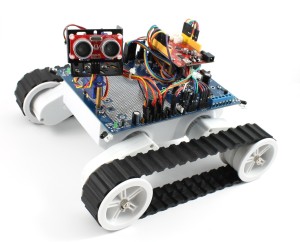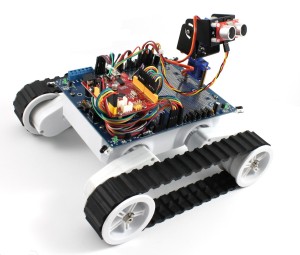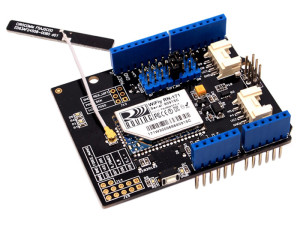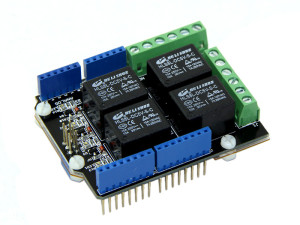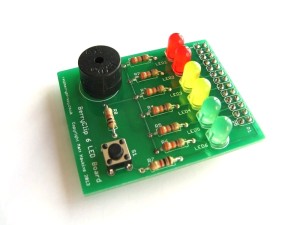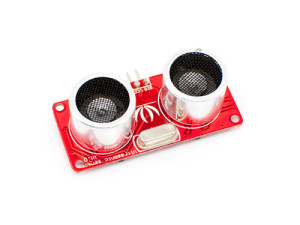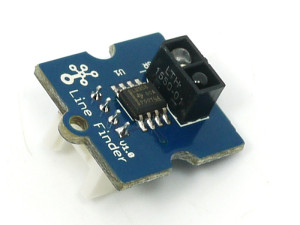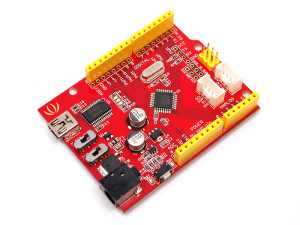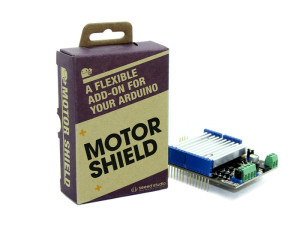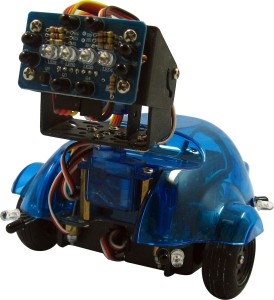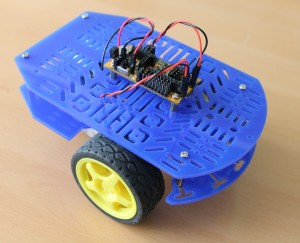Well, it’s taken us much longer than we would have liked, but finally, we’re pleased to announce the release of a brand new robot kit based around the popular Rover 5 chassis from Dagu. This robot kit combines the Rover 5 chassis, with a Seeeduino (an Arduino compatible controller board) to give you a complete robot with loads of great features. The kit is easy to assemble, and accessible for beginners, whilst providing the flexibility that more experienced robot builders need to build advanced robotic projects.
We’ve built this kit by combining components that we already sell in our store to create a complete robot. All the components have been selected and tested to ensure that they work well together, and we’ve written a manual describing step by step how to assemble the robot. We’ve also created sample code in the form of a wall following behaviour so that you can get up and running with the robot really quickly.
Buying the kit gives you a great saving compared to buying each of the components individually, but even if buying the kit is not for you, because you have some of the components already, we hope that the manual and sample code will provide some useful ideas for your own projects. Check the kit out here, and let us know what you think.

